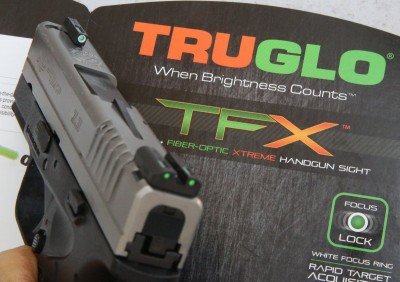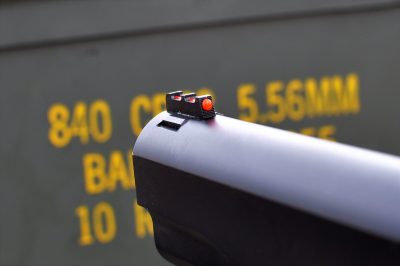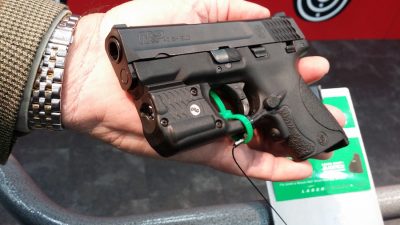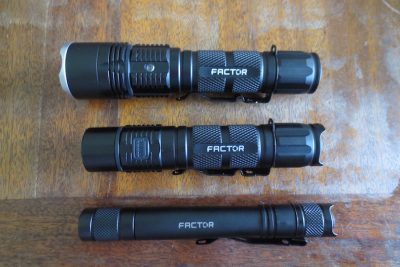Editor’s Note: The following is a post by Mark Kakkuri, a nationally published freelance writer who covers guns and gear, 2nd Amendment issues and the outdoors. His writing and photography have appeared in many firearms-related publications, including the USCCA’s Concealed Carry Magazine. You can follow him on Twitter @markkakkuri.
Read Mark’s previous articles in this “Top Five” series:
- Shoot Better with These Top Five Tips for Firearms Training
- Top 5 Ways to Carry Concealed When Dressed Up
- Top Five Every Day Carry Essentials
- Top Five Reasons to Carry a Revolver
- Top Five Keychain Tools for EDC
As you know, one of the fundamental gun safety rules is “know your target” (and what’s in front of it and behind it). Seems obvious, but you never know how you’re going to respond in a difficult situation. That’s why we review these rules again and again; we’ll want this rule and the others to be constantly in our thinking and guiding our actions, no matter the circumstances. Since life-threatening encounters occur in broad daylight as well as in pitch blackness and everywhere in between, it behooves us to be able to follow the “know your target” rule not only by being able to see a target but also by being able to aim properly. As such, here are the top five ways to fix a low-light shooting scenario.
1. Night Sights

The Truglo TFX is their new tritium night sight. They are glass capsules filled with a glowing radioactive isotope of hydrogen, and they don’t need to be charged up by a light source first. They last about 12 years before starting to dim.
A handgun equipped with night sights usually has front and rear sights equipped with small vials containing Tritium, a radioactive substance that glows in low- or no-light conditions. Night sights require no external power source; they’re always “on” and usually last several years before slowly fading out. You don’t see the glow of the Tritium sights unless there’s little or no available light.
Typical night sight patterns include two dots on the rear sight and one dot on the front sight or one vertical line on the rear sight and one dot on the front. Tritium vials come in green but you can also get yellow or orange. As for color combinations, you can have a yellow dot on the front and two greens on the rear and plenty of other options. Some gun manufacturers offer a factory upgrade from standard white dot sights to night sights; some equip their guns only with standard sights and let you figure out whether you want to get night sights and how to install them later.
Generally, if a gun does not come with night sights and will be carried for personal defense, this is one of the first upgrades. Night sight upgrade costs vary greatly from manufacturer to manufacturer — whether ordering from the factory or as an aftermarket upgrade.
Pro: In low- and no-light situations you can see where your gun is aimed.
Con: They do not light up your target and eventually will fade out.
2. Fiber-Optic Sights

A red optic front sight on an Ed Brown Special Forces 1911.
Similar to night sights, a handgun equipped with fiber-optic sights has front and rear sights with light-gathering fiber optic tubes that collect available light and stream it through the sight tube where it culminates in a dot in the sights. Fiber-optic sights require no external power source, but they do require some light in order to work. In other words, they don’t store light and glow in the dark.
Available in a variety of colors and styles, fiber-optic sights are popular not only on handguns but also on other firearms from rifles to shotguns. Fiber-optic sights run the gamut of costs but generally are less expensive than Tritium-powered night sights. The difference is that fiber-optic sights do not provide much of a sight picture in total darkness. But then, if you can’t see your target, you probably shouldn’t shoot anyway.
Pro: In daylight and low-light conditions, or if you light up your target with a light, you can see where your gun is aimed.
Con: If there’s no light, you won’t see the sights.
3. Mounted Tactical Light/Laser

The new Laserguard Pro from Crimson Trace combines a compact laser unit with an integrated white light for the ultimate in illumination and targeting with your pocket pistol. Shown equipped on a Smith & Wesson Shield pistol.
Another low light aiming fix is a light or laser mounted to a handgun — either on the gun’s tactical rail or affixed to the grips or trigger guard. Some units combine light and laser to light up a target and pinpoint the actual place where the bullets will strike. If the unit is a light only, obviously there’s still a need to aim the gun properly, either with night sights or fiber optic sights. If the unit is a laser only, there’s still a need to make sure the target can be adequately seen — usually requiring a source of light.
Pro: Light/laser units can significantly assist in seeing or aiming or both.
Con: There’s a second operation to activate a light or laser and affixing one to your gun often means a unique holster will be required.
4. Handheld Tactical Light

Various EDC options from Factor Flashlights.
One of the easiest ways to mitigate against low- or no-light conditions is simply to carry a handheld tactical light. You can use it without using the gun at the same time, the light itself can be used as a deterrent, and, if needed, you can use the light as an impact weapon. Handheld tactical lights come in all shapes and sizes — and capabilities and prices — and the highest-end models will fill a room with bright light, effectively lighting up a target.
Pro: Versatile, simple and effective.
Con: Using a light and a gun doubles the complexity of the operation and requires training in order to be truly effective.
5. Night-Vision Gear
It might seem a little far-fetched to suggest night-vision gear for civilian personal-defense situations, but if just a dozen or so years ago someone would have suggested that modern tactical lights and lasers would be available to virtually any civilian…So, hang tight and watch as night vision similarly becomes more commonplace. Anyway, with night-vision gear, the need for an external lighting source becomes unnecessary. A person wearing night-vision gear can literally see in the dark as the gear uses highly technical electronics and optics to make this possible.
Pro: Night-vision gear allows a user to see in low- and no-light conditions.
Con: Night-vision gear currently is an expensive option, usually requiring a helmet and/or goggles and thus not viable for everyday personal defense. Yet. We will likely see great innovation in this area in years to come.
For more critical information on the use of deadly force and other firearms and self-defense topics, visit www.uscca.com/GunsAmerica.
A gun mounted light also means you are pointing the muzzle at any thing in front of you harmful or loved ones who may fire back if they ID you as a threat when blinded by the light.
Yes, these are good points.
While a laser assists your targeting ability, it does not “light anything up.” Do not use without any kind of adequate light source.
CONS for gun mounted lights/lasers and hand held lights: All these also self identify as the light source thereby creating a potential target for the bad guys. These light sources can also degrade you eyes night vision.